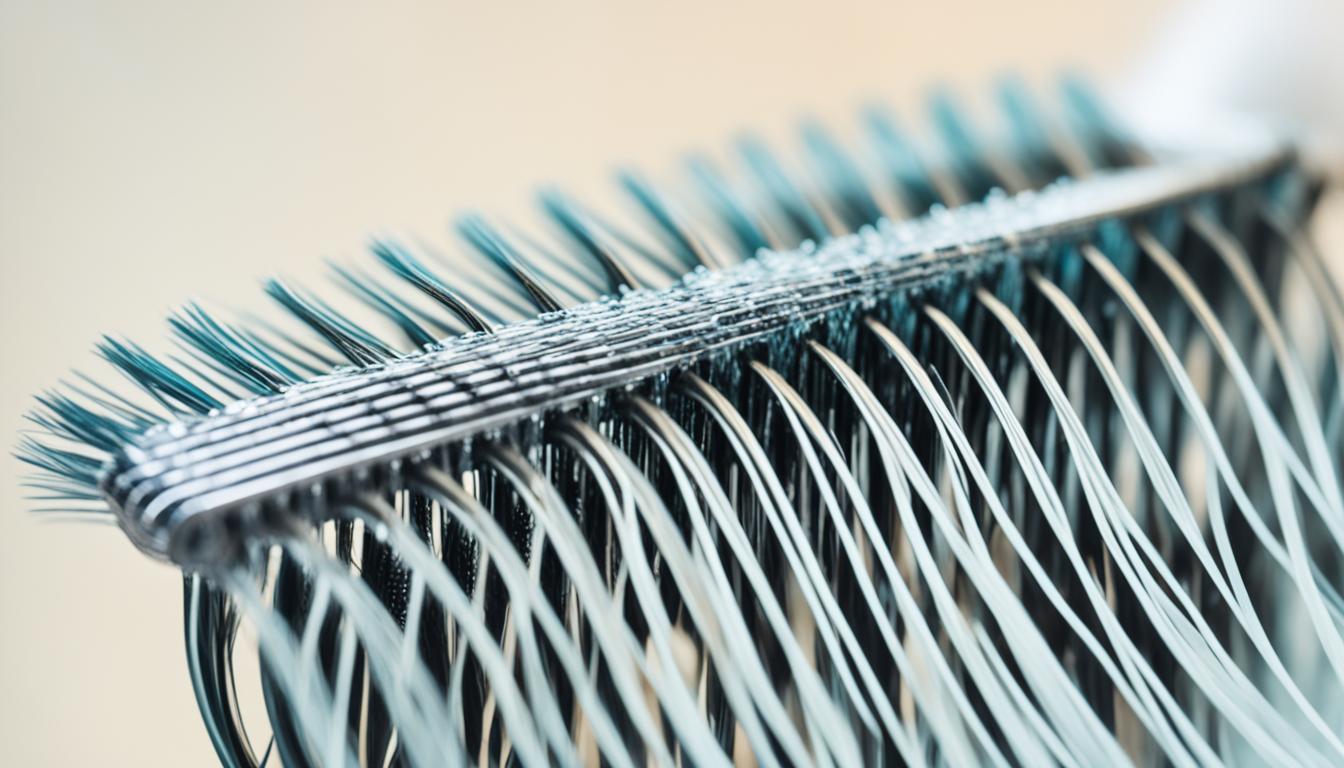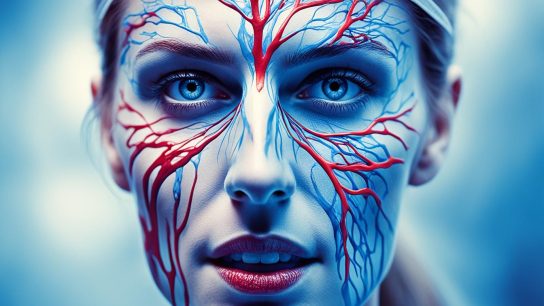Have you ever looked down at the shower drain after washing your hair and felt a wave of panic as you saw strands of hair swirling away? I know I have. It’s a common experience that can leave us questioning if we’re losing more hair than we should be. So, how many strands of hair do you actually lose in a day? Is it normal to lose 200 hair strands a day? Let’s dive into the facts and debunk some common myths about hair loss.
Causes of Excessive Hair Shedding
Excessive hair shedding can be caused by various factors. Stress, illness, tight hairstyles that cause traction, nutritional deficiencies, autoimmune conditions, thyroid issues, and other medical conditions can all contribute to increased hair loss. If you’re experiencing significant hair loss with noticeable bald spots, patchiness, or clumps of hair falling out, it is recommended to see your primary care physician or dermatologist for further evaluation.
One common cause of excessive hair shedding is stress. When you’re under a lot of stress, it can disrupt the hair growth cycle and lead to increased hair loss. Illnesses and medical conditions can also impact hair health and result in excessive shedding. If you have an underlying medical condition, treating the condition may help reduce hair loss.
Nutrition plays a crucial role in maintaining healthy hair. Nutritional deficiencies, especially deficiencies in iron, zinc, and biotin, can contribute to hair loss. A balanced diet rich in vitamins, minerals, and protein can help promote healthy hair growth and reduce excessive shedding.
In some cases, hair loss may be a result of certain autoimmune conditions or hormonal imbalances. Conditions like alopecia areata, where the immune system attacks the hair follicles, can lead to excessive hair shedding. Thyroid issues, such as hypothyroidism or hyperthyroidism, can also cause hair loss.
If you notice significant hair loss accompanied by other symptoms like fatigue, weight changes, or changes in skin or nail health, it is important to consult with a healthcare professional. They can help determine the underlying cause of your hair loss and recommend appropriate treatment options.
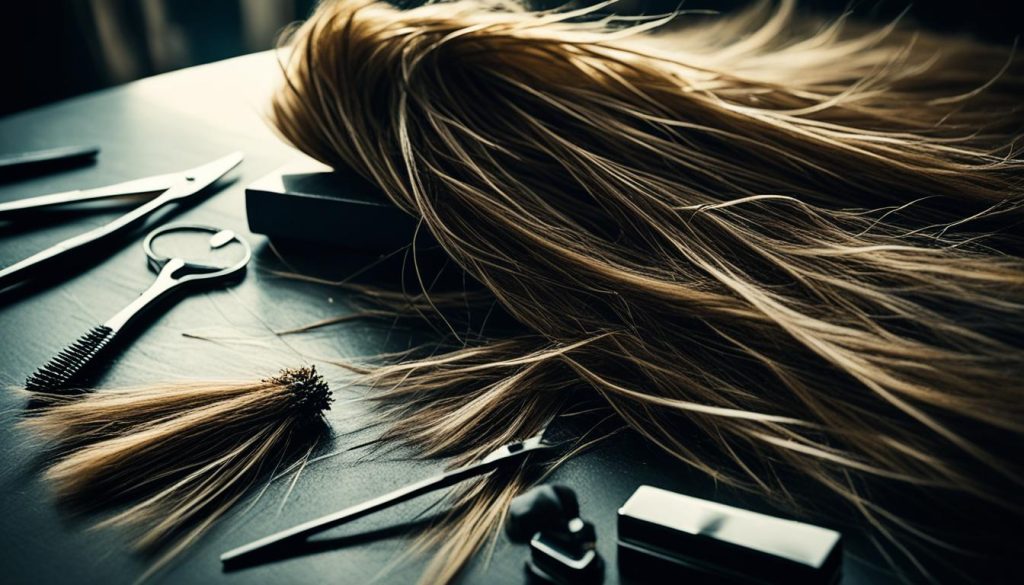
When to Seek Medical Evaluation?
- If you’re losing more hair than usual and notice significant bald spots or patchiness on your scalp
- If clumps of hair are falling out when you wash or brush your hair
- If you’re experiencing hair loss along with other symptoms like fatigue, weight changes, or changes in skin or nails
How Many Strands of Hair Do You Lose a Day?
When it comes to hair loss, understanding the average daily shedding rates can provide valuable insights into hair health. The hair growth cycle consists of three main phases: anagen, catagen, and telogen. These phases determine the rate at which hair grows and sheds.
The Hair Growth Cycle
During the anagen phase, approximately 90% of hair strands are actively growing. This phase lasts for about two to six years, with hair growing at an average rate of 1 centimeter per month. The remaining 10% of hair strands are in the catagen and telogen phases.
The catagen phase is a transitional phase that lasts for about two weeks. Only about 1-2% of hairs are in this stage at any given time.
The telogen phase is a resting phase that lasts for about two to three months. Approximately 8-9% of your hair is in the telogen phase. During this phase, the hair strand prepares to detach from the scalp, and normal shedding occurs.
On average, it is estimated that about 100 hairs or less are shed per day during the telogen phase. This is considered normal and does not indicate excessive hair loss.
The Impact of Hair Growth Phases
Understanding the different phases of the hair growth cycle is essential for comprehending average daily hair loss. While shedding around 100 hairs per day may seem alarming, it provides a window into the natural hair growth process.
It’s important to note that everyone’s hair shedding rate can vary, and factors such as age, genetics, and overall health can influence this rate. However, an average of 100 hairs shed per day is within the range of typical hair loss.
| Hair Growth Phase | Percentage of Hair Strands | Duration | Average Daily Hair Loss |
|---|---|---|---|
| Anagen Phase | 90% | 2 to 6 years | N/A |
| Catagen Phase | 1-2% | About 2 weeks | N/A |
| Telogen Phase | 8-9% | About 2 to 3 months | ~100 hairs or less |
While hair shedding is a natural part of the hair growth cycle, if you notice significant changes in hair loss patterns, such as bald spots or excessive thinning, it is advisable to consult with a healthcare professional for further evaluation and guidance.
Managing and Preventing Hair Loss
While it is not always possible to prevent hair loss completely, there are certain measures you can take to manage and minimize excessive shedding. By adopting healthy habits and making informed choices, you can promote hair health and reduce daily hair shedding.
1. Maintain a Healthy Lifestyle
A healthy lifestyle plays a crucial role in preventing hair loss. Make sure to maintain a balanced diet, incorporating nutrients essential for hair health, such as vitamins A, C, and E, iron, and protein. Regular exercise improves blood circulation, which promotes hair growth. Prioritize quality sleep, as it allows your body to repair and rejuvenate, contributing to overall hair health.
2. Manage Stress Levels
Excessive stress can trigger hair loss and disrupt the natural hair growth cycle. Engage in stress-reducing activities, such as meditation, yoga, or deep breathing exercises. Prioritize self-care and find healthy outlets for stress, such as hobbies or spending time with loved ones.
3. Avoid Excessive Heat Styling and Chemical Treatments
High heat from styling tools and chemical treatments can damage hair follicles and lead to hair breakage and shedding. Limit the use of heat styling tools and choose products with heat protectants. Minimize chemical treatments such as bleaching, perming, and coloring, as they can weaken hair strands and cause damage.
4. Ensure a Balanced Diet
A well-rounded diet provides the nutrients necessary for healthy hair growth. Include foods rich in protein, omega-3 fatty acids, antioxidants, and essential vitamins and minerals. Opt for lean meats, fish, nuts, fruits, vegetables, and whole grains to support optimal hair health.
5. Use Products that Promote Scalp and Hair Health
Choose hair care products that are gentle, sulfate-free, and enriched with ingredients that promote scalp health and hair growth. Look for shampoos and conditioners containing biotin, keratin, and botanical extracts known for their nourishing and strengthening properties.
It’s important to remember that managing hair loss requires a holistic approach. Consult with a healthcare professional, such as a dermatologist or trichologist, who can provide expert guidance tailored to your specific needs. They may recommend treatments or suggest specialized products to address your concerns and promote healthy hair growth.

Implementing these hair care strategies and seeking professional advice can help you manage hair shedding and maintain healthier, fuller-looking hair.
How Stress and Diet Affect Hair Health?
When it comes to maintaining healthy hair, stress levels and diet play a crucial role in hair health and shedding. Chronic stress can disrupt the hair growth cycle and contribute to increased hair shedding. Additionally, a poor diet lacking essential nutrients can negatively impact hair health, leading to excessive shedding and hair loss.
Stress affects hair health through the disruption of the hair growth cycle. Does dirty hair fall out more? When stress levels are high, more hair follicles enter the telogen (resting) phase, resulting in an increased hair shedding rate. This can lead to noticeable hair loss on a daily basis.
Diet also plays a significant role in hair health. Essential nutrients, such as vitamins and minerals, are crucial for promoting healthy hair growth and minimizing hair fall per day. Hair shedding rate can increase when the diet lacks these important nutrients. For example, deficiency in vitamins like biotin, vitamin D, and iron can weaken the hair strands and lead to excessive shedding.
To promote healthier hair growth and reduce hair fall, it is essential to maintain a healthy diet and manage stress levels effectively. Incorporating a balanced diet with a variety of nutrient-rich foods can provide the necessary vitamins and minerals for hair health. Hair fall per day statistic can decrease when the diet includes ingredients like leafy greens, fish, eggs, and nuts, which are rich in essential nutrients.
Additionally, managing stress is crucial in maintaining hair health. Engaging in stress-reducing activities such as exercise, meditation, and relaxation techniques can help manage stress levels and support healthier hair growth.
Chronic stress can disrupt the hair growth cycle, resulting in increased hair shedding. A poor diet lacking essential nutrients can also contribute to hair loss and excessive shedding. By managing stress levels and maintaining a healthy diet, individuals can promote healthier hair growth and reduce hair fall per day.
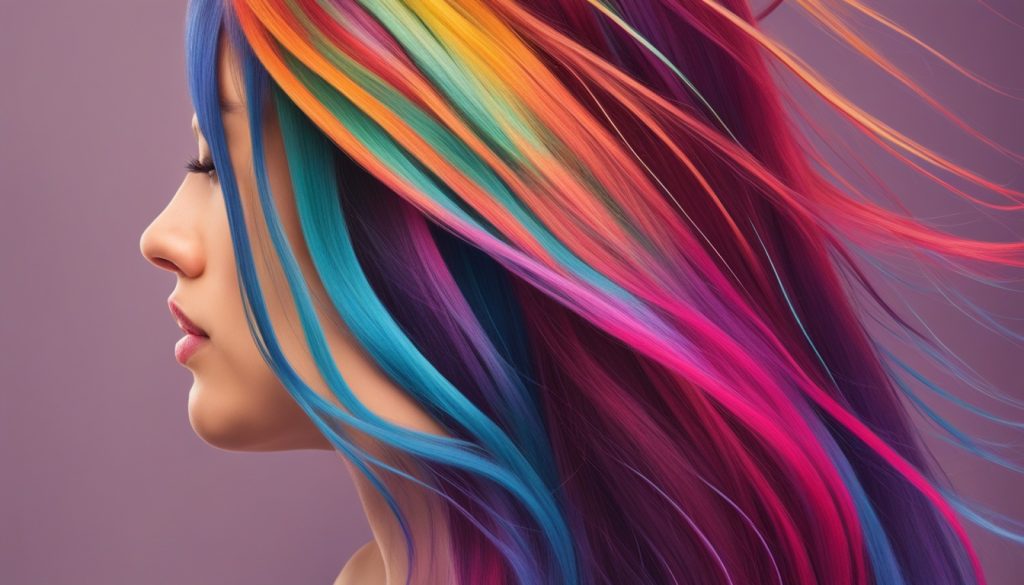
Common Myths About Hair Loss
There are many common myths surrounding hair loss that often lead to misinformation and unnecessary worry. One popular misconception is that frequent washing or having dirty hair causes more hair to fall out. In reality, the act of washing or brushing your hair can simply make it more apparent that you are shedding. It does not increase the actual hair loss.
Another myth is the belief that a certain amount of hair loss in the shower is abnormal. The truth is that everyone’s hair shedding rate can vary, so what may be considered normal for one person may be different for another. Some individuals may experience more noticeable hair fall in the shower due to the accumulation of shed hairs, while others may not notice much hair loss at all.
It’s important to focus on overall hair health rather than obsessing over the amount of hair loss in the shower. It’s normal to lose some hair every day as part of the natural hair growth cycle. If you are concerned about excessive hair loss, it’s advisable to consult with a healthcare professional who can provide personalized advice and guidance.
Debunking Hair Loss Myths
Let’s take a closer look at some common myths about hair loss:
- Myth: Dirty hair falls out more. The truth is that cleanliness has no direct impact on hair loss. Keeping your scalp and hair clean is important for overall hair and scalp health, but it does not affect the rate of hair loss.
- Myth: Excessive brushing causes hair loss. While excessive brushing can cause hair breakage, it does not directly lead to hair loss from the root. However, it’s important to use a gentle brushing technique and avoid brushing wet hair, which is more prone to breakage.
- Myth: Wearing hats leads to hair loss. Wearing hats does not cause hair loss. However, wearing tight hats or headgear for prolonged periods can cause traction alopecia, a form of hair loss caused by constant pulling or tension on the hair follicles.
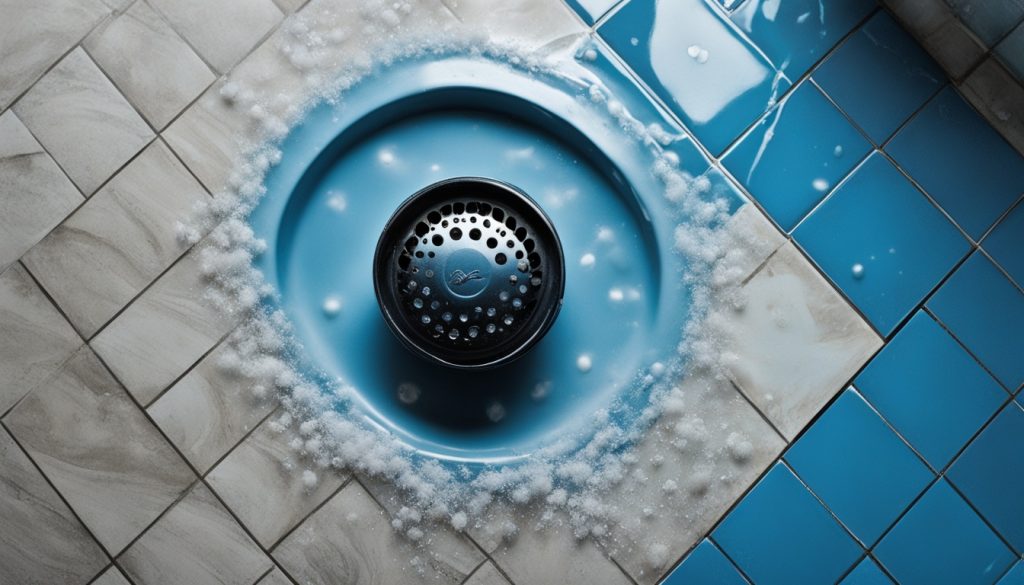
In conclusion, it’s important to separate fact from fiction when it comes to understanding hair loss. Don’t let common myths and misconceptions cause unnecessary concern. Instead, focus on maintaining overall hair health through proper hygiene, a balanced diet, and seeking professional advice if you have concerns about excessive hair loss.
Conclusion
In conclusion, it is normal to experience an average hair shedding rate of 50 to 100 strands per day. Hair fall per day within this range is considered a natural part of the hair growth cycle and does not signify excessive hair loss or health issues. However, if you observe significant changes in your hair loss patterns, such as bald patches or noticeable thinning, it is advisable to seek professional medical evaluation for a comprehensive assessment.
Various factors can contribute to excessive hair shedding, including stress, health conditions, and styling practices. To promote healthier hair growth and manage hair fall per day, it is essential to prioritize overall well-being. This includes maintaining a balanced diet with vital nutrients for hair health, managing stress levels, and adopting gentle styling methods. While it is not always possible to prevent hair loss entirely, these measures can help minimize excessive shedding and support optimal hair health in the long run.
Remember, every individual’s hair shedding count and daily hair fall rate may vary. What may be considered normal for one person might differ for another. It is essential to focus on nurturing your hair’s overall health and seek personalized advice from healthcare professionals or dermatologists if you have concerns about excessive hair loss. By taking proactive steps towards hair care and addressing underlying factors contributing to hair fall per day, you can maintain healthier, luscious locks.

